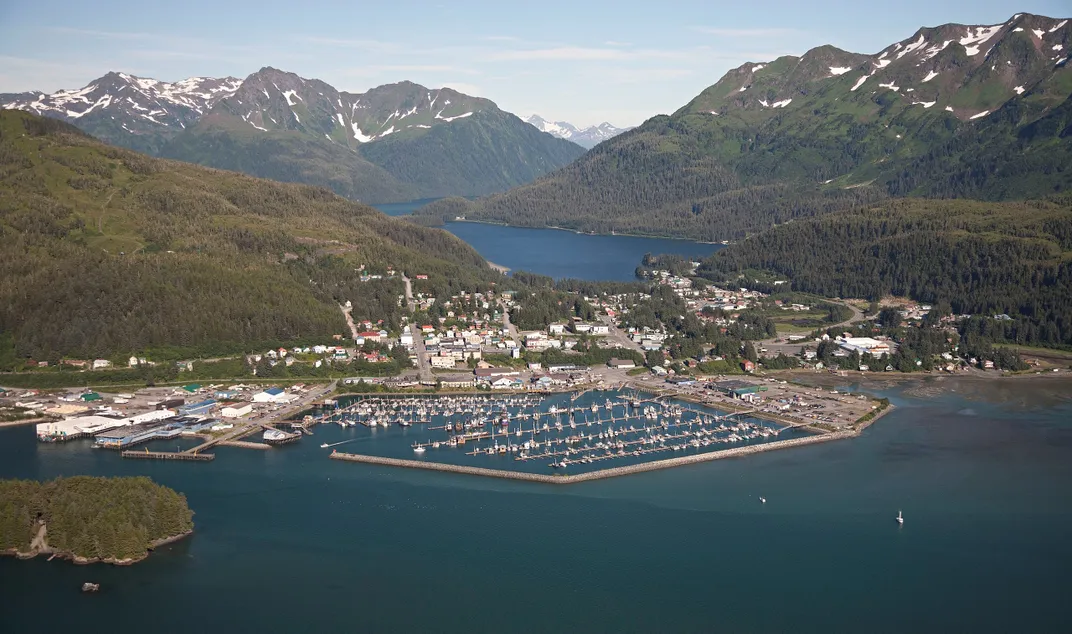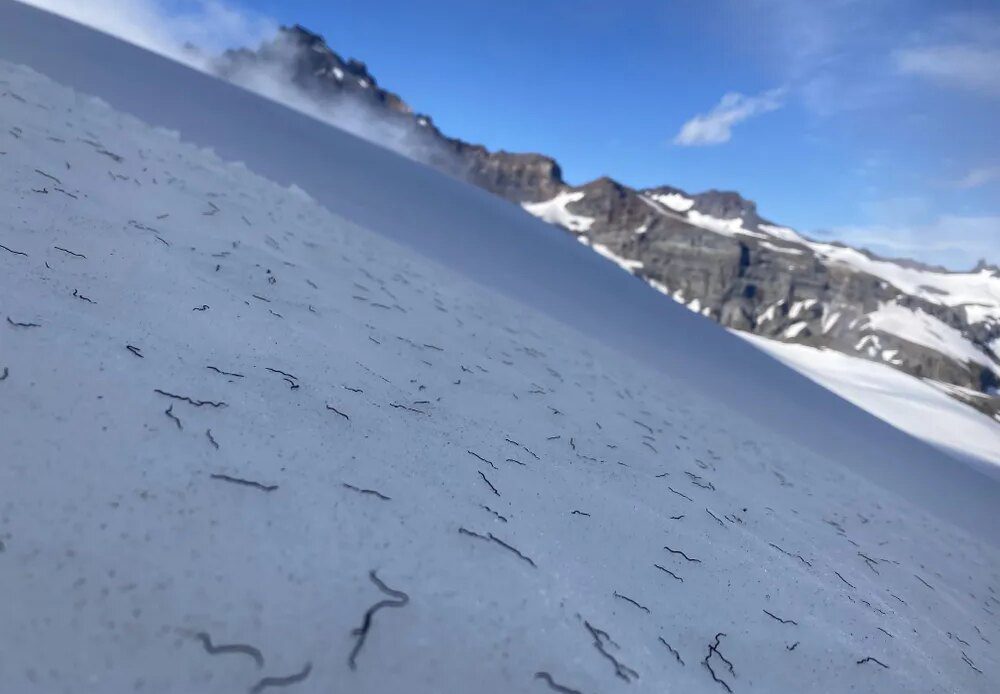Ice worms spend most of the day burrowing their way through the cold, dark interior of the glacier, coming to the surface only in the afternoon to feed on algae and bacteria.
Scott Hotaling
Wander onto a southern Alaskan glacier on a summer day around 4 p.m., and you’ll likely witness a mysterious phenomenon that few people know exists: the rising of the ice worms.
Ice worms are about an inch long and pitch-black. They look a bit like small earthworms, and they’re the only macroscopic animals adapted to live inside glacial ice. They spend most of the day burrowing their way through the cold, dark interior of the glacier, coming to the surface only in the afternoon to feed on algae and bacteria. When that happens, they pop out of the snow by the million. With up to 50 ice worms per square foot, you can’t walk without stepping on them.
It’s a fascinating spectacle, one that even scientists don’t fully understand. The habits of ice worms are poorly understood. Most people—even those who have spent their whole lives in the Pacific Northwest, where ice worms live—have never heard of them.
But in one small fishing town in southern Alaska, the ice worm is something of a local mascot. In fact, residents dedicate eight days each February to celebrate the creature, mysteries and all.
The Cordova Ice Worm Festival
February is a bleak time in Cordova, Alaska. It’s dark 16 hours out of every 24. Temperatures hover around freezing. The sky is gray and bloated with clouds. It can sideways rain for weeks on end. And there’s not much to do—most of the town’s 2,500 full-time residents rely on fishing and tourism, both summer industries, for their livelihoods.
Most of Cordova’s 2,500 full-time residents rely on fishing and tourism, both summer industries, for their livelihoods. Forest Service Alaska Region, USDA
In the winter of 1961, locals finally got sick of the doldrums.
“Everybody was down on their luck, and the weather was terrible,” says lifelong Cordova resident Kelsey Hayden. “So a group of guys got together over drinks to put something together.” They wanted a festival, and they decided they needed a mascot that was uniquely Cordovan. A salmon or a crab would make sense, given the fishing economy, but this was winter. A few drinks…
Click Here to Read the Full Original Article at Travel | smithsonianmag.com…
